Tata Tiago EV Review: First Drive
The Tiago EV is India’s most affordable electric car. But, is it the perfect product for an average car buyer to start their EV journey? We find out as we drive the Tiago EV for a full day in Goa.
By Shivank Bhatt
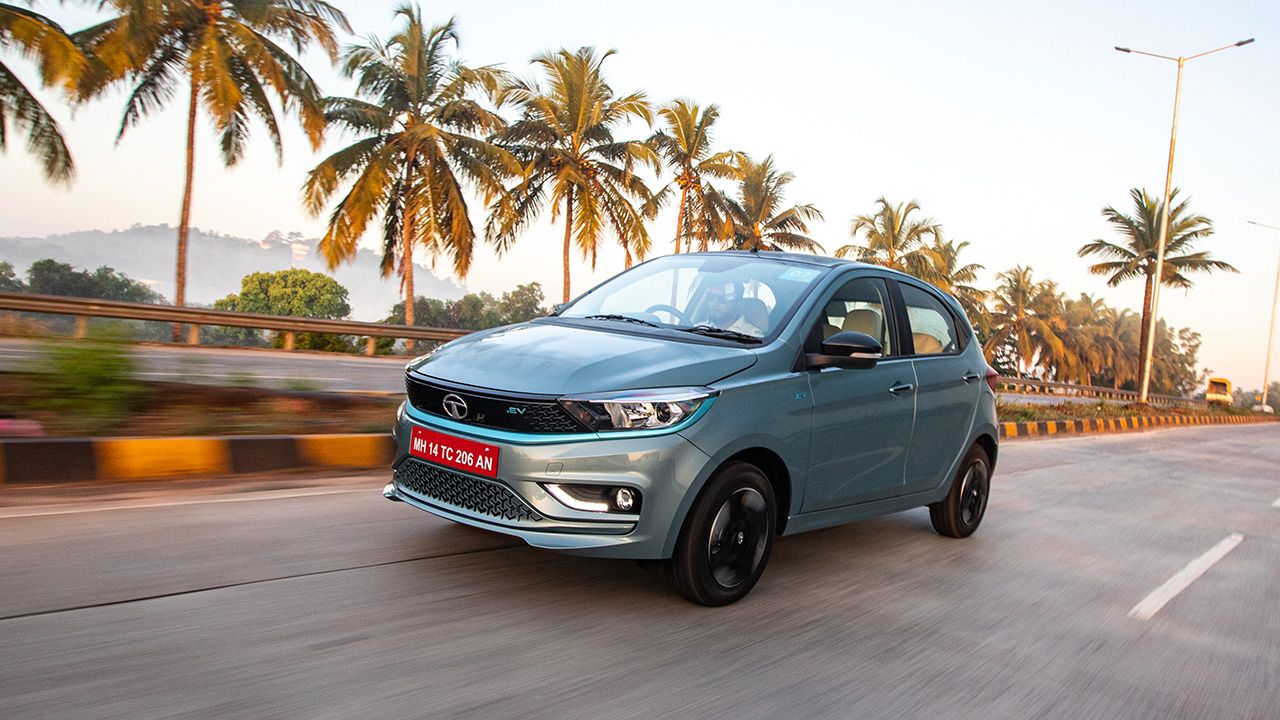
The Tiago EV is India’s most affordable electric car. But, is it the perfect product for an average car buyer to start their EV journey? We find out.
Meet the Tata Tiago EV – India’s most affordable electric car. Now, given the robust and proven underpinnings of the ICE-powered Tiago, and the popularity and success of the Nexon EV, you can’t bet against this brand-new EV from Tata.
But, having said that, you can’t just give the Tiago EV a free pass just because it happens to be related to the family of high achievers. So, to get a taste of what the Tiago EV is all about, we got to sample it over a full day. Is it the perfect product to begin your electric car journey with?
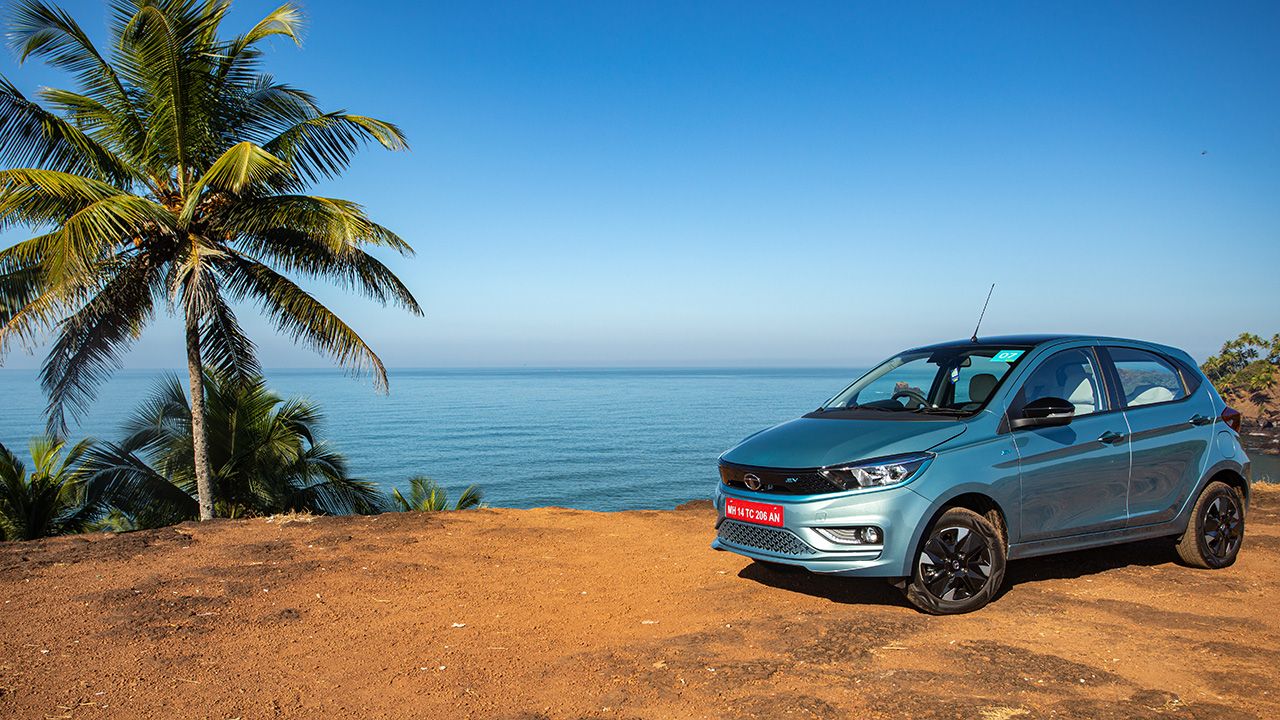
Cool & Conventional
On the outside, there’s no mistaking the Tiago EV for anything else because it doesn’t look all that different from its regular counterpart. But to mark its green credentials, it’s got some unique exterior elements – like, the grille here is completely blanked-off for obvious reasons, and you will also notice light blue accents along with EV badges all around the vehicle. The model you see here is the top-spec variant, so it gets blacked-out ORVMS, a black roof and 14-inch Hyperstyle wheels – these aren’t alloy wheels, in case you’re wondering. There are some funky colour options on offer such as Teal Blue, Midnight Plum, and Tropical Mist, which is the one you here. Overall, the Tiago EV is a good-looking hatch, but it doesn’t look remarkably modern or futuristic.
Inside, it’s more or less the same affair. The cabin layout and dashboard design are similar to the regular Tiago but there are some crucial changes – the top-end trim gets leatherette upholstery that looks and feels quite premium, while the gear lever is replaced by a rotary dial. Now it does look cool, but I find it to be a little fidgety to operate as it’s got some lag and doesn’t feel natural to use. On the centre console, you’ve quick access buttons, including the ones to increase or decrease brake regen levels.
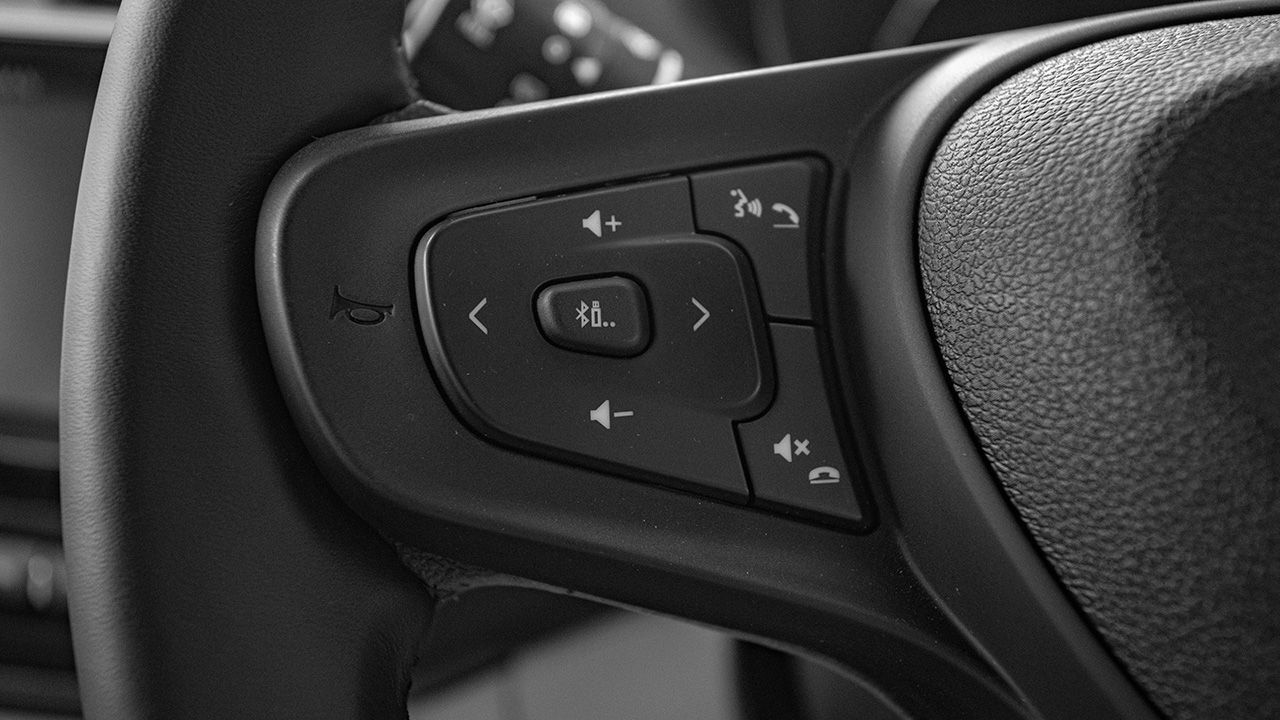
Feature-wise, you get the same 7-inch Harman-sourced touchscreen with Apple CarPlay and Android Auto connectivity as you get in the regular Tiago, and along with that you also get an 8-speaker audio system, automatic climate control, auto headlamps, rain-sensing wipers, cruise control, TPMS, driver's seat height adjust and more.
The space management inside is quite impressive as the Tiago feels quite roomy both at the front and at the back. The rear bench has decent legroom and headroom, and the seat itself is quite comfy. For a small hatchback, it’s quite impressive, you’ve to say.
The Tiago EV has a boot space of 240 litres, which is only 2 litres less than the regular version. However, because of the position of the battery pack, there’s no spare wheel on offer with the EV version. You have to make do with a tyre puncture repair kit instead.
Battery Power
The Tiago EV is offered in two versions – Medium Range and Long Range. The former gets a 19.2kWh Li-ion battery pack whereas the latter gets a bigger 24kWh pack. The Medium version has a claimed range of 250km, while the Long Range, as the name suggests, will go a lot longer and come to a halt after 315km (claimed). Both feature a PSM motor that drives the front wheels. Power output and torque differ slightly – the Medium Range version is rated at 45kW (60bhp)/110Nm and the Long Range at 55kW (74bhp)/114Nm. On this occasion, we had the Long Range version in the top-spec variant with all the bells and whistles.
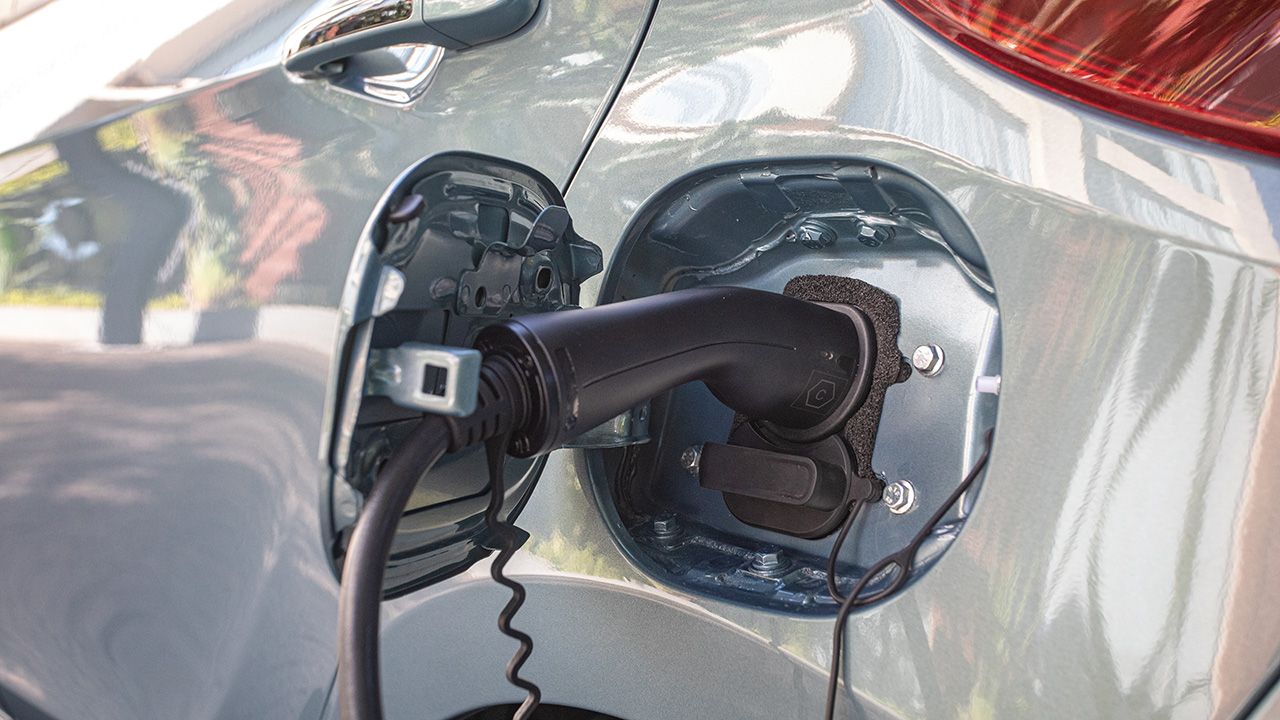
As soon as you get going, you can tell the Tiago EV isn’t a shoddy job or a lazy attempt to go electric. Everything feels solid and sturdy in the car, and it drives rather well. The throttle response is well-modulated and it’s a brisk performer. It’s supremely refined, too. There are two driving modes – City and Sport. The latter claims a 0-60km/h acceleration of 5.7 seconds. However, while the acceleration is noticeably stronger in Sport mode, the City mode is not a dull affair either. I found myself driving in the City mode most of the time and didn’t really feel the need to switch to the faster mode.
Navigating through city traffic makes for a fun drive because of the instant acceleration and small footprint of the Tiago EV. It’s a peppy little thing and you’ll enjoy driving it within the confines of a city. On highways, you can get up to speeds of 120km/h fairly easily in both modes, albeit you’ll notice the power starting to taper off post 80-90km/h.

As we’ve come to expect from Tata, the Tiago EV's ride-and-handling balance is spot-on. Since it’s an EV with a heavy battery pack, the spring rates have been reworked (stiffened) compared to the regular Tiago. The ride does feel a touch firm at low speeds, but it never gets unbearably uncomfortable or bouncy. As the speed rises, the ride quality improves and it’s a much nicer experience. At high speeds, Tiago EV’s drive quality and stability make it feel like you’re driving a bigger and more expensive car.
The handling is neutral for the most part. Not saying it’s a driver’s delight, but it steers and turns in a predictable manner. You get tempted to hustle it around corners because of its pint-size and peppy EV performance. However, it does feel its weight around corners if you turn in at silly speeds – understeer sets in early as the tyres scream for mercy. The steering has a nice heft to it all the time but it does feel lifeless in terms of outright feedback.
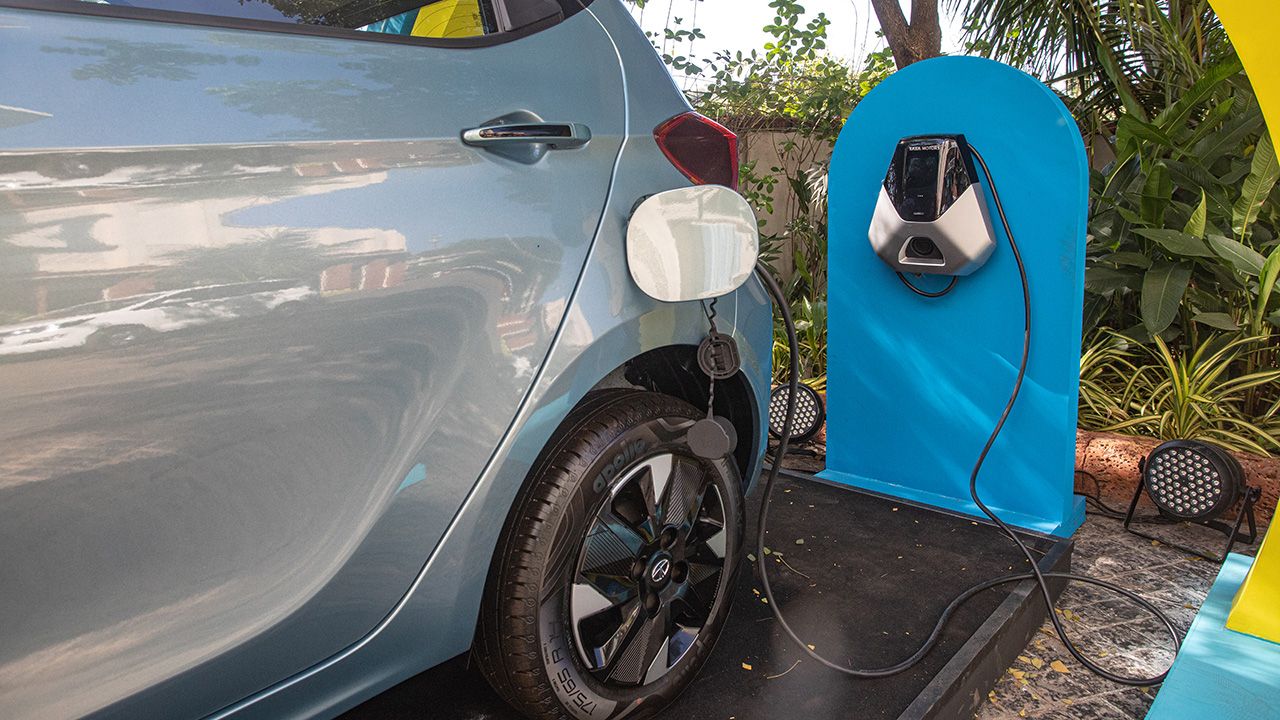
While the performance and ride-and-handling are Tiago’s strong suits, its range isn’t as great as advertised. We drove the car for a full day in mixed driving conditions – city traffic, highways, twisting hill roads – and when we returned the car after a 184km drive, the battery percentage was down to just 6%. Except for one or two occasions where we hit triple-digit speeds, we maintained a steady cruise of 80km/h on the highway, and in traffic, I was overly cautious and gentle with throttle inputs. In fact, for around 30km, we turned the aircon off to maximise range. Give or take, I don’t think you can eke out more than 200km of range in mixed daily driving conditions – and this is for the Long Range version.
On the flip side, the four levels of regen seem to work quite effectively. In traffic, you can turn the regen to max (Level 3) and not only does it help you drive with ‘one-pedal’, but it also increases the range by a couple of km. However, the brakes feel wooden and numb when you press the pedal with full force/emergency stops.
Charging time for the Tiago EV varies from 57 minutes to around 9 hours, depending on the kind of charger you’re using. A DC 50Kw public charger will juice up the battery from 10 to 80% in just under an hour, while the standard 3.3Kw AC home charger will take six hours and 20 minutes to do the same. The optional 7.2 KW AC home charger will reduce the charging time to around three and a half hours.
The Tiago EV hasn’t yet undergone Global NCAP’s crash tests, but Tata claims it’s as safe as the regular counterpart, which has a 4-star rating.
Verdict
As a city runabout, the Tiago EV ticks all the boxes – it’s the right size, the ride-and-handling balance is spot-on, the build quality and fit-and-finish are impressive, and because it’s electric, it’s got sprightly performance. The only possible deal breaker is its real-world range, which means you can’t plan outstation trips without thinking twice or thrice.
Long story short, the Tiago EV is a clean, green, and well-rounded city car and you should consider it if it’s going to be your first electric car. However, if you want your first EV to be your only car, I’d suggest you save up some more, stretch your budget, or request your bank for a bigger loan amount, and opt for the Nexon EV instead.
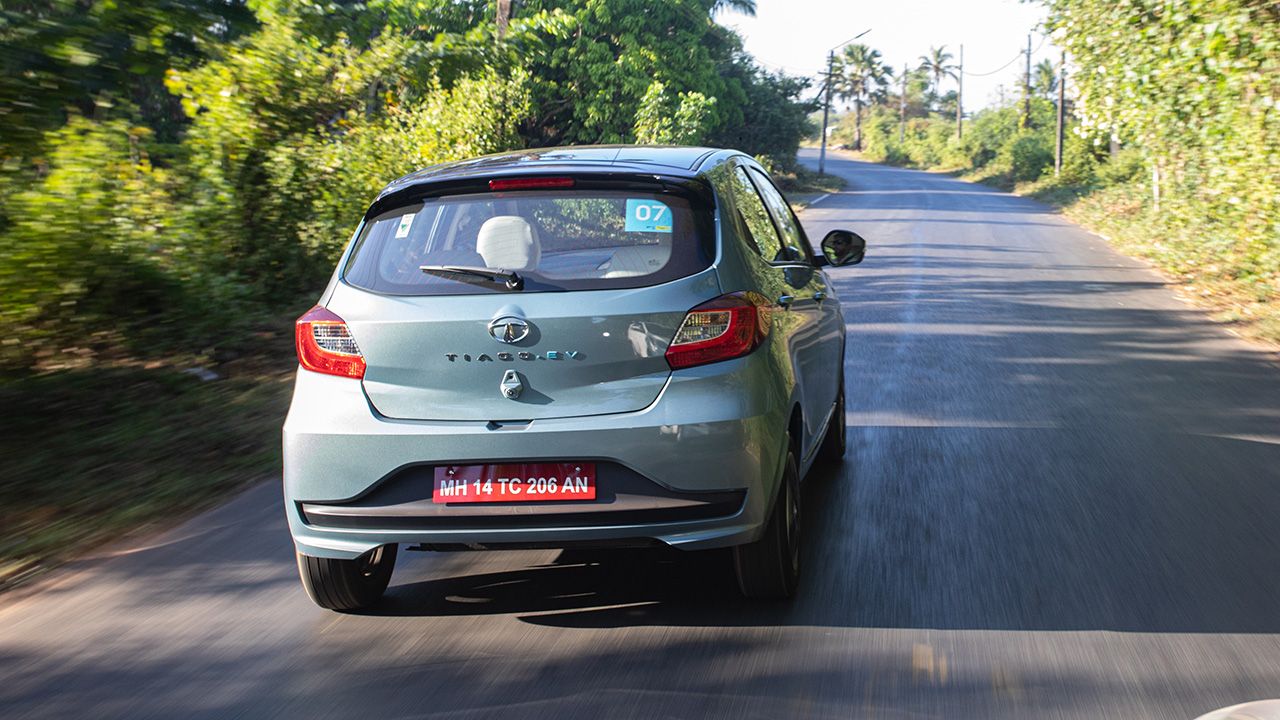
Also read:
Motor: Single PMS
Battery: 24kWh / Li-Ion
Transmission: Single-Speed / Front-Wheel Drive
Power: 74bhp
Torque: 114Nm
Price: ₹11.79 Lakh (Ex-Showroom)
X-Factor: The pint-size Tiago EV is the perfect daily runabout, and it’s also quite fun to drive.
|
Pros |
Cons
|




-1763351568306.webp)

